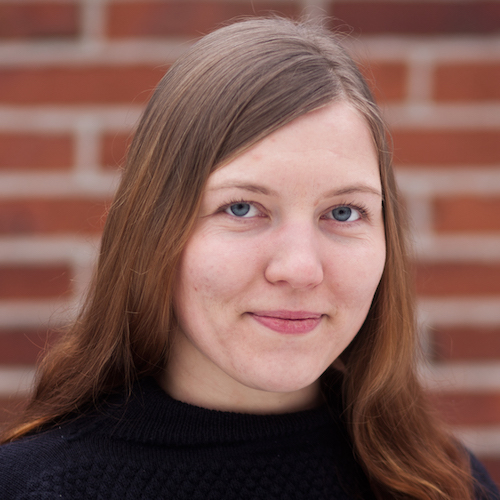Jacob and the Meaning of GPS-enabled Cameras
Read how armchair mapping, cameras with GPS, and the passion to make oneself useful have shaped one of Mapillary's most active community members.
Jacob was one of the first Mapillary members that I started to recognise after having just joined Mapillary. It was hard not to, considering his activity besides uploading photos. gitne is our #2 all-time blurrer and #5 all-time editor. He has provided a book's worth of feedback to the Mapillary team and helped translate our community resources. And interesting adventures come along with mapping, too. For example, not long ago he had his faithful camera confiscated by the police when he was out capturing...
Could you please you introduce yourself briefly?
By profession, I am a software developer working on application software. I am passionate about productive, robust and useful software in the hands of ordinary people. The greatest source of motivation for me are people to whom my work is useful or makes their life easier. This is also why I contribute to open-source software and open data initiatives like OpenStreetMap and Mapillary.
Jacob's camera back in the right hands
How did you become involved with Mapillary?
As an OpenStreepMap contributor it always bothered me that armchair mapping only from satellite or aerial imagery has its limitations. And, although GPS-enabled cameras and smartphones existed even before Mapillary, and photos could be placed on a map, no tools or platform existed for sharing the photos with the mapping community.
Virtually all photo-sharing web services, even those displaying geo-tagged photos on a map (like Panoramio did), targeted either professional photography artists or amateur leisure audiences. No web service was actually thinking of photography as tool for collecting and extracting data. So, taking photos for the purpose of mapping for oneself only was practically a fruitless effort. Besides, you could basically only analyze photos of places that you had been to.
Mapillary filled exactly this void and I knew it was going to work because it was (and still is) catering to an existing need. Furthermore, the decision to redistribute every contributor's photos under the open CC-BY-SA license enables everybody to potentially equally benefit from everyone's contributions. The crowdsourced approach also lowers the cost for everybody.
How would you explain Mapillary?
Mapillary is at the triangle of photography, data collection and automated processing, and cartography. However, what is most intriguing is the fact that for the first time in the history of photography and cartography, data can be derived in an automated way. The days of wasting millions of man hours to find a needle in the haystack are over. At the lowest level, Mapillary is filling the missing piece for GPS-enabled cameras and geotagged photos. By its very existence it gives a truly meaningful purpose for these devices, and thus a benefit to people. In other words, a GPS-enabled camera is as useless without a map as a geotagged photo without automated data extraction.
“A GPS-enabled camera is as useless without a map as a geotagged photo without automated data extraction.”
What has kept you engaged?
For me, there is a game (or enthusiasm) aspect, a health aspect, and an altruistic aspect to it.
Although Mapillary has not been conceptualized as a game, it definitely bears some elements of that. Some people have fun accumulating experience points or collecting items in role playing games in virtual worlds; others collect post stamps or maybe even pocket monsters in the wild. Basically, the same is true about Mapillary. There are numerous trophies to collect and achievements to unlock in Mapillary too, may it be the overall number of photos, distance mapped, countries mapped, blur edits submitted, detected or photographed traffic signs etc. The best of all is that the data you create or collect is real-world data and can be put to good use for others.
Another nice side effect for people like me, who spend a lot of their work time glued to office chairs, is that capturing can be done on foot or while riding a bike (well, you can capture from a car too but then you will not get any workout). Hence, you are encouraged to get some fresh air, discover new places and do a little bit of a workout, of course assuming weather conditions permit for some decent shots. This is the health aspect to Mapillary.
This beautiful walk in Colberg, Poland, has definitely not been captured on an office chair
Contributing to the Mapillary effort beyond uploading photos helps to improve and evolve the service. To create tools is one way to improve the Mapillary experience; it is equally important to enter into a dialog with developers and give feedback to them on the product they are creating.
There is a huge number of kilometers on planet Earth to cover. Hence, I spread the word about Mapillary and animate people to contribute in order to help create even more detailed maps and, thus also accelerate the overall progress. In the future, I believe, most streets and roads will be captured automatically by ordinary cars, as soon as car manufacturers start equipping them with internet-connected cameras by default. However, before this can happen, there are still a lot of legal and privacy issues to solve.
Before I had the time to put together this blog post based on my discussions with Jacob, he emailed us with some good news. He has publicised a project that grew out of the workflow he needed to create for the GPS-enabled compact camera he uses. Make Sequence (mkseq) is a command‑line tool for processing photo sequences prior to upload to Mapillary. While still considered a prototype right now, the functionality is intended to be added to the Mapillary plug‑in for JOSM. Check it out on GitHub!
